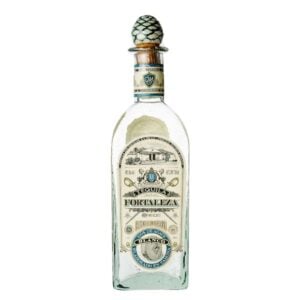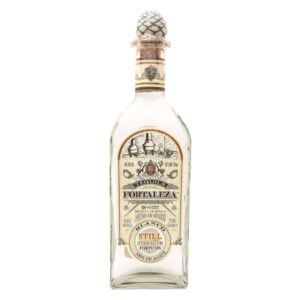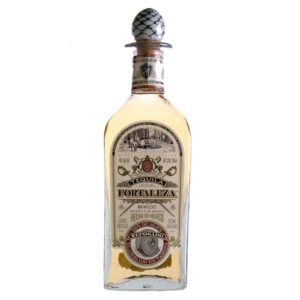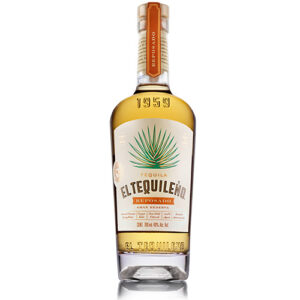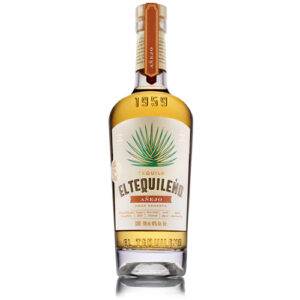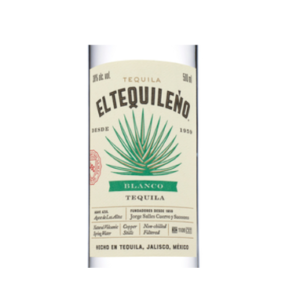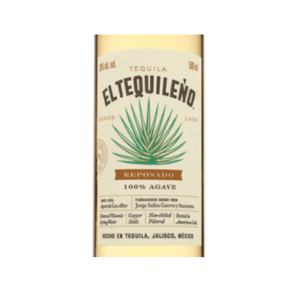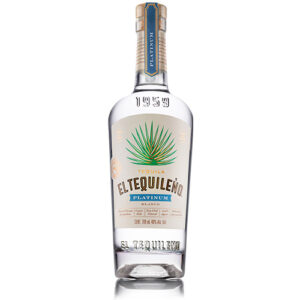Showing all 8 resultsSorted by popularity
Tequila – The Complete Guide
TL;DR: In Brief
- Tequila is characterized by its distinctive agave flavor profile ranging from earthy and vegetal to sweet and fruity
- Produced primarily from blue agave plants (Agave tequilana Weber) and defined by strict production regulations in Mexico
- Found in several styles, including Blanco, Reposado, and Añejo, each offering different maturation profiles
- Best enjoyed sipped neat in a proper tequila glass or experienced in classic cocktails like Margaritas or Palomas
Disclaimer: This guide is intended for informational purposes for adults over 18 years of age. Vault of Spirits encourages responsible alcohol consumption.
Introduction to Tequila
Tequila has a rich history and fascinating craftsmanship behind it. From its origins in Mexico’s Jalisco region to its global popularity today, this spirit has evolved to become one of the world’s most cherished distilled beverages.
This guide provides insight into the production, flavor notes, and enjoyment of tequila, whether you’re a newcomer or a seasoned enthusiast.
What separates tequila from other spirits is not just its distinctive taste but also its protected designation of origin, ensuring authentic production methods that have been refined over centuries.
How Did Tequila Originate?
From Past to Present
Tequila’s story begins with the ancient Aztecs, who first harvested the blue agave plant to produce a fermented beverage called pulque.
The modern tequila we know today emerged in the 16th century when Spanish conquistadors introduced distillation to Mexico.
The first official tequila factory was established in 1795 by Don José Antonio de Cuervo in the town of Tequila, Jalisco, which later gave the spirit its name.
What started as a local Mexican spirit has transformed over centuries into a globally recognized premium distilled beverage, celebrated for its complexity and craftsmanship.
Which Historical Milestones Have Shaped Tequila?
The Mexican War of Independence (1810-1821) saw tequila become a symbol of Mexican national pride and identity.
In 1974, the Mexican government declared the term “tequila” as intellectual property, establishing legal protection for authentic production.
The year 1994 marked the formation of the Tequila Regulatory Council (CRT), which established strict standards for production and authenticity.
In 2006, UNESCO declared the agave landscape and ancient tequila production facilities a World Heritage Site, recognizing their cultural significance.
How Has Tequila Influenced Cultural Traditions?
In Mexico, tequila is deeply woven into cultural celebrations, from weddings to national holidays, often accompanied by the traditional toast: “Arriba, abajo, al centro, y pa’dentro!”
The craft of the jimador – the skilled harvester of agave plants – represents a generational occupation that has preserved traditional agricultural knowledge for centuries.
Tequila has inspired art, music, and cinema throughout Mexico, appearing in countless songs, paintings, and films as a symbol of national heritage.
The spirit’s international rise has created cultural bridges, introducing global consumers to Mexican traditions and customs through tastings and spirit tourism.
Why Is Tequila Popular Today?
Premium tequila has undergone a renaissance in recent decades, shifting from its reputation as merely a shot spirit to one savored like fine whiskey or cognac.
Celebrity endorsements and investments from figures like George Clooney, Dwayne “The Rock” Johnson, and Kendall Jenner have heightened tequila’s profile in popular culture.
The craft cocktail movement has embraced quality tequila as a versatile base spirit, moving beyond the basic margarita to create sophisticated, complex drinks.
Consumers’ increasing interest in authenticity, heritage, and artisanal production methods has perfectly aligned with tequila’s traditional production story.
How Is Tequila Produced?
Which Raw Materials Are Used in Production?
Authentic tequila production centers around one crucial ingredient: the blue agave plant (Agave tequilana Weber), which must be grown in designated regions of Mexico.
Unlike other agave spirits, premium tequila must be made from 100% blue agave, while mixto tequila can contain up to 49% of other sugars.
The terroir of the agave fields dramatically influences flavor, with highland agaves typically producing sweeter, fruitier notes and lowland agaves offering more herbaceous, earthy profiles.
Primary ingredients:
- Blue Agave (Agave tequilana Weber) – The heart or “piña” of this plant provides the fermentable sugars
- Water – Often sourced from natural springs, influences the final character of the spirit
- Yeast – Either naturally occurring or cultivated strains that convert sugars to alcohol
How Does the Fermentation Process Work?
Before fermentation begins, the harvested agave piñas are typically roasted in traditional brick ovens (hornos) or modern autoclaves to convert complex carbohydrates into fermentable sugars.
The cooked agave is then crushed to extract the sweet juice, either using traditional stone wheels (tahona) or modern roller mills.
Fermentation typically lasts 3-5 days, during which either natural yeasts in the air or carefully selected commercial strains convert the agave sugars into alcohol.
This process not only creates alcohol but also develops essential flavor compounds that will characterize the final tequila.
Which Distillation Techniques Are Used?
Tequila undergoes at least two rounds of distillation to reach its proper alcohol content and purity, with some premium brands opting for triple distillation.
Common distillation methods:
- Pot Still Distillation – Traditional method that preserves more agave flavor but produces less volume
- Column Still Distillation – Modern method that creates a cleaner spirit but may strip some character
- Hybrid Systems – Combining both methods to balance efficiency with flavor retention
The “heads” and “tails” of the distillation run are typically removed, with only the “heart” of the distillate used for the final product.
The master distiller’s expertise in determining precise cut points significantly impacts the tequila’s final flavor profile.
What Is the Significance of Aging?
Unlike clear Blanco tequila (aged less than two months or unaged), Reposado and Añejo expressions develop their complexity through barrel aging.
Most aged tequilas mature in ex-bourbon American oak barrels, though some producers experiment with French oak, wine, sherry, or cognac casks.
The Mexican climate accelerates the aging process compared to cooler regions, creating distinctive wood interaction in shorter timeframes.
During aging, the tequila extracts vanilla, caramel, and spice notes from the wood while mellowing harsh alcoholic edges, resulting in a smoother, more complex spirit.
Which Regions Are Known for Tequila?
Where Are the Best Varieties Produced?
By law, authentic tequila can only be produced in five designated Mexican states, with Jalisco being the heart of production.
The highlands (Los Altos) of Jalisco produce tequilas known for their sweeter, more floral character due to higher elevation and iron-rich red soil.
The valley surrounding the town of Tequila produces spirits with earthy, herbaceous profiles thanks to its volcanic soil and lower elevation.
While less prominent, the states of Michoacán, Guanajuato, Nayarit, and Tamaulipas also contribute to tequila production, each adding regional character to their spirits.
How Do Geography and Climate Affect the Flavor?
Highland agaves grow more slowly at 7,000+ feet above sea level, developing higher sugar content and often yielding citrus and floral notes in the finished tequila.
Lowland agaves mature faster in the warmer valley conditions, typically expressing more herbaceous, vegetal characteristics and mineral notes.
The region’s volcanic soil imparts distinctive mineral qualities that can be detected in the final spirit, particularly in traditionally produced tequilas.
Humidity and temperature fluctuations affect barrel aging dramatically, with Jalisco’s climate causing faster extraction of wood compounds compared to spirits aged in cooler regions.
What New Trends Are Seen in Tequila Production?
Sustainability has become a major focus, with producers implementing water conservation techniques and finding uses for agave byproducts.
Extended aging categories beyond the traditional classifications, such as Extra Añejo (aged over three years), are gaining popularity among connoisseurs.
Innovative cask finishing has entered the tequila world, with producers experimenting with port, sherry, wine, and other exotic barrels to create unique flavor profiles.
Some traditional producers are reviving ancient production methods, including clay pot fermentation and tahona stone crushing, to reconnect with historical techniques.
What Do the Different Quality Designations Mean?
The “100% Agave” designation indicates tequila made solely from blue agave sugars, while “Mixto” can contain up to 49% other sugars, typically cane sugar.
Age classifications include Blanco (unaged or aged less than 2 months), Reposado (aged 2-12 months), Añejo (aged 1-3 years), and Extra Añejo (aged over 3 years).
The NOM number on bottles (Norma Oficial Mexicana) identifies the distillery of production, allowing consumers to trace authenticity.
The CRT (Consejo Regulador del Tequila) certification guarantees that the spirit meets all legal requirements for authentic tequila production.
How Does Tequila Taste?
What Characterizes the Typical Flavor Profile?
Authentic tequila exhibits a core profile of cooked agave, which presents as a vegetal sweetness often described as similar to cooked squash or sweet potato.
Beyond the signature agave notes, tequila contains a complex array of flavors determined by region, production methods, and aging.
The mouthfeel ranges from crisp and clean in unaged expressions to rich and velvety in well-aged versions.
Typical aromas:
- Vegetal & Earthy – Cooked agave, green pepper, olive, black pepper, mineral
- Sweet & Fruity – Citrus, tropical fruit, vanilla, caramel, honey
- Spicy & Woody (in aged expressions) – Cinnamon, clove, oak, chocolate, coffee
How Does the Flavor Vary Between Different Styles?
Blanco (Silver) tequila offers the purest expression of agave, with bright, peppery, citrus notes and a clean, crisp finish.
Reposado (“rested”) develops subtle vanilla and caramel notes from barrel aging while maintaining significant agave character, creating a balanced middle ground.
Añejo (“aged”) presents deeper oak influence with prominent vanilla, caramel, and chocolate notes, often with a smoother, more dessert-like quality.
Extra Añejo expressions become remarkably complex, sometimes resembling fine cognac or whiskey with dried fruit, tobacco, and rich oak characteristics.
How Does the Flavor Develop with Age?
Fresh agave brightness gradually transforms into mellow sweetness as tequila ages, with peppery notes softening considerably.
The initial six months of aging introduce gentle vanilla and caramel undertones while maintaining significant agave character.
Between one and three years, wood sugars and tannins increasingly integrate, creating richer mouthfeel and more pronounced oak influence.
Beyond three years, the agave character becomes more subtle as wood-derived flavors dominate, with oxidation creating complex dried fruit and nutty notes.
What Signs Reveal High Quality?
Superior tequila displays clean, pronounced agave flavors without harsh alcohol burn or artificial sweeteners that mask production flaws.
On the palate, high-quality expressions offer complexity and balance rather than one-dimensional flavor, with a pleasant, lingering finish.
Visual indicators include natural color for the age statement (artificial caramel coloring often suggests lower quality) and proper viscosity.
The aroma should be inviting and complex, not dominated by alcohol fumes or chemical notes that indicate poor distillation cuts.
How Is Tequila Best Enjoyed?
What Is the Optimal Serving Method?
Quality tequila deserves to be sipped slowly at room temperature, rather than taken as a hasty shot with salt and lime—a practice that originated to mask poor-quality spirits.
Allow premium tequila to breathe for a few minutes after pouring to open up its aromatic compounds.
Take small sips that coat your entire palate, allowing you to detect the full range of flavors from initial sweetness to the developing complexity.
Between sips of aged tequila, cleanse your palate with still water rather than lime or salt, which can overwhelm the spirit’s subtle notes.
Which Glass and Temperature Are Ideal?
A proper tequila glass resembles a champagne flute but with a shorter stem and slightly wider bowl to concentrate aromas while allowing swirling.
Traditional Mexican caballitos (tall, narrow shot glasses) work well for Blanco tequilas, while snifter-style glasses better showcase aged expressions.
The ideal serving temperature is 62-68°F (16-20°C), slightly below room temperature but not chilled, which would suppress aromatics.
Avoid frosted or chilled glasses for premium tequila, as cold temperatures mask the subtle flavor nuances that distinguish quality expressions.
How Do You Taste Like an Expert?
Begin by examining the tequila’s appearance, noting its clarity, viscosity, and color (if aged).
Gently swirl the spirit and observe how it coats the glass—quality tequila will form “legs” that slowly drip down the sides.
First smell with your mouth slightly open to reduce alcohol impact, then note the progression from initial impressions to deeper aromas.
When tasting, let the tequila coat your entire mouth before swallowing, then exhale through your nose to experience the retronasal aromas that complete the flavor profile.
Which Dishes Complement Tequila?
Blanco tequila pairs brilliantly with seafood dishes, particularly ceviche, grilled fish, and shrimp cocktail, where its bright citrus notes complement the fresh flavors.
Reposado expressions match beautifully with grilled meats, enchiladas with red sauce, and dishes featuring moderate spice levels.
Añejo and Extra Añejo tequilas complement rich chocolate desserts, flan, or aged cheeses, with their caramel and vanilla notes enhancing these flavors.
Traditional Mexican dishes featuring complex mole sauces find perfect harmony with aged tequilas, as their depth matches the sauce’s intensity.
Which Cocktails Can Be Made with Tequila?
Which Classic Cocktails Should You Know?
The Margarita remains tequila’s ambassador to the world, with its perfect balance of tequila, lime juice, and orange liqueur.
Paloma
- Ingredients: Blanco tequila, fresh lime juice, grapefruit soda, pinch of salt
- Preparation: Build in a highball glass with ice, stir gently, and garnish with a lime wheel
- History: While less known internationally than the Margarita, the Paloma is actually more popular within Mexico itself
The Tequila Sunrise delivers visual drama with its gradient from orange to red, created by grenadine slowly sinking through orange juice and tequila.
El Diablo combines tequila with crème de cassis, lime juice, and ginger beer for a complex, spicy-sweet cocktail that showcases tequila’s versatility.
Which Modern Cocktails Are Worth Trying?
The Oaxacan Old Fashioned updates the classic whiskey cocktail by combining reposado tequila with mezcal, agave nectar, and bitters for a smoky, complex sipper.
The Jalapeño Cucumber Margarita adds fresh vegetal notes and spice to the classic formula, highlighting tequila’s natural affinity for both heat and garden flavors.
The Rosita combines tequila with sweet and dry vermouth, Campari, and bitters for a sophisticated, Negroni-inspired cocktail that’s perfect for aged tequila.
Mexican Mule substitutes tequila for vodka in the Moscow Mule, creating a more complex drink where the agave notes complement the spicy ginger beer.
How Is Tequila Enjoyed Neat?
Blanco tequila can be served slightly chilled in a caballito glass, allowing its fresh agave character to shine.
Reposado expressions show beautifully at room temperature in a lowball glass, sometimes with a single large ice cube to slowly dilute and open the flavors.
Añejo and Extra Añejo deserve cognac-style treatment in a snifter, permitting gentle warming in the hand to release complex aromas.
Traditional sangrita—a non-alcoholic sipper of tomato, orange juice, lime, and chili—makes an excellent accompaniment to neat tequila, cleansing the palate between sips.
Which Homemade Variants Can You Experiment With?
Infused tequilas offer endless creativity—try jalapeño for heat, pineapple for tropical sweetness, or cucumber for refreshing notes.
Homemade tequila cream liqueurs combine tequila with condensed milk, vanilla, and coffee for a Mexican twist on Irish cream.
Barrel-aging your own cocktails using small oak barrels can transform a basic Margarita or Negroni variation into a complex, integrated drink.
Tequila-based bitters can be made by infusing Blanco tequila with botanicals like chile, citrus peel, and herbs, creating a unique addition to your home bar.
What Should You Know Before Buying Tequila?
Which Details Should You Pay Attention to When Buying?
Always look for the “100% Agave” designation on the label, as mixto tequilas can contain additives and typically offer less authentic flavor.
Check for the NOM number, which identifies the distillery and ensures the tequila meets official Mexican standards.
Be wary of marketing terms like “gold” or “joven” without age statements, as these often indicate caramel-colored mixto rather than quality aged tequila.
Premium tequilas will list the specific region where their agave was grown, with “Los Altos” (highlands) or “Valle” (valley) indicating attention to terroir.
What Do You Get for Your Money in Different Price Ranges?
Entry-level 100% agave tequilas ($25-35) offer authentic flavor without aging complexity—perfect for cocktails and casual sipping.
Mid-range options ($40-75) include quality Reposados and younger Añejos with balanced aging characteristics and excellent sipping potential.
Premium expressions ($80-150) feature extended aging, small-batch production, and often estate-grown agave for noticeable quality improvements.
Ultra-premium and collector tequilas ($150+) emphasize exceptional aging, rare barrel finishes, limited production, and presentation elements like crystal decanters.
How Is Tequila Properly Stored?
Unopened tequila can be stored indefinitely if kept away from direct sunlight and temperature fluctuations.
Once opened, tequila is best consumed within 6-12 months, though it won’t spoil after this period—it may simply lose some aromatic intensity.
Store bottles upright to minimize the spirit’s contact with the cork or cap seal, which can deteriorate over time.
Unlike wine, tequila doesn’t continue to age or improve in the bottle, so there’s no benefit to extended storage after purchase.
Is Tequila a Good Investment?
Unlike whiskey or wine, tequila has a less established collector’s market, though this is changing with ultra-premium and limited releases.
Certain collectors’ editions from prestigious brands like Casa Noble, Don Julio, and Patrón have appreciated in value, particularly those with artistic bottles or extremely limited production.
Vintages and special releases from highly regarded distilleries like El Tesoro, Fortaleza, and G4 are beginning to show investment potential.
The best investment approach is focusing on quality and uniqueness rather than speculation, as the tequila investment market remains less predictable than other spirits.
Which Brands Do We Recommend?
What’s Best for Beginners?
El Tesoro Blanco offers newcomers an excellent introduction to traditional production methods with bright, clean agave flavors.
Olmeca Altos Reposado presents a perfect entry point for those curious about aged expressions, with accessible pricing and balanced flavor.
Espolòn Blanco delivers authentic 100% agave character at a budget-friendly price, making it ideal for cocktail experimentation.
Herradura Silver showcases highland agave’s fruit-forward profile with enough complexity to appreciate neat while remaining approachable.
What Will Impress Enthusiasts?
Fortaleza Blanco Still Strength offers purists an unadulterated, higher-proof expression showcasing traditional tahona production methods.
G4 Añejo represents fourth-generation distilling expertise with exceptional balance between agave character and oak influence.
Tapatio Excelencia Extra Añejo, aged for an impressive 4+ years, delivers remarkable complexity that rivals fine cognac.
Siete Leguas Reposado continues to impress aficionados with its consistent quality and representation of traditional production techniques.
Which Bottles Are Most Sought After?
Don Julio 1942 has achieved iconic status as a luxury tequila, known for its distinctive bottle and smooth, vanilla-forward profile.
Rey Sol Extra Añejo comes in a stunning sun-shaped crystal decanter and represents Maestro Tequilero distiller José Valdez’s crowning achievement.
Tears of Llorona Extra Extra Añejo, aged for 5+ years in Scotch, sherry, and brandy barrels, is considered among the most complex tequilas available.
Clase Azul Reposado, with its hand-painted ceramic decanter, has become both a collector’s item and a symbol of premium tequila.
Where Do You Get the Most for Your Money?
Cimarrón Blanco offers exceptional value as a cocktail base, delivering clean, traditional flavor at a remarkably accessible price point.
Arette Reposado provides aged complexity and artisanal production at mid-shelf pricing, representing excellent quality-to-price ratio.
Pasote Añejo delivers highland agave character and expert aging at a price significantly below similarly crafted competitors.
El Tequileño Reposado Rare offers six-year aging (well beyond typical reposado requirements) at a price point comparable to standard añejos.
Frequently Asked Questions
What Is Tequila?
Tequila is a distilled spirit made from the blue agave plant, primarily in the area surrounding the city of Tequila and in the highlands of Jalisco, Mexico.
By Mexican law, authentic tequila must be produced in designated regions of Mexico and contain at least 51% blue agave sugars, though premium versions use 100% blue agave.
The spirit typically ranges from 35% to 55% alcohol by volume, with most commercial expressions bottled at 40% ABV (80 proof).
How Is Tequila Produced?
Production begins with harvesting mature blue agave plants, which take 7-12 years to reach optimal sugar content.
The heart of the agave plant (piña) is cooked to convert complex carbohydrates into fermentable sugars.
After cooking, the agave is crushed, fermented with yeast, and then distilled at least twice before being either bottled immediately (Blanco) or aged in oak barrels (Reposado, Añejo, Extra Añejo).
What Characterizes Tequila?
Authentic tequila is characterized by its distinctive agave flavor profile, which ranges from herbaceous and earthy to sweet and fruity depending on the region and production methods.
Unlike other spirits, tequila has a protected designation of origin, similar to champagne or cognac, ensuring production standards are maintained.
The spirit is categorized by its aging time, from unaged Blanco to Extra Añejo expressions aged for three years or more.
Where Do You Buy Tequila?
Quality tequila is available at well-stocked liquor stores, with specialist retailers offering wider selections of premium and craft expressions.
Online retailers like Reserve Bar, Caskers, and Old Town Tequila specialize in premium spirits and offer extensive tequila selections with detailed product information.
When traveling in Mexico, distillery visits offer the opportunity to purchase expressions not available internationally, often at better prices.
